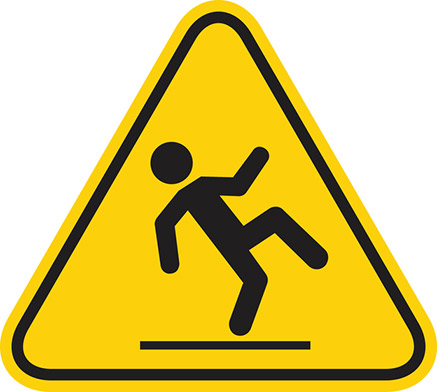Opportunities with AI
Revolutionize risk and gain a competitive edge.
Learn MoreRisk Appetite in Real Time
Enhance financial forecasting based on AI analysis of emerging market risks
Learn MoreBenchmarks with Robust Analytics
Benchmark financial performance against peers. Drill down by geography to identify opportunities.
Learn Morein Clicks Instead of Hours
Unify internal and external risk data with AI for proactive decision making
Learn Morefor Regulatory Changes
Identify and manage regulatory action items with your personalized GPT companion
Learn MoreRecently, falls are amongst the most common causes of serious work related injuries and deaths, requiring employers not only to set up the work place that prevents employees from falling off of overhead platforms, elevated work stations or into holes in the floor and walls but also train employees so that know how to recognize fall hazards and follow safety practices.
OSHA requires fall protection to be provided at elevations of four feet in general industry workplaces, five feet in shipyards, six feet in the construction industry and eight feet in long shoring. In addition, OSHA requires fall protection to be provided when working over dangerous equipment and machinery, regardless of the fall distance.
So what can be done to prevent employees from being injured from falls? Well, it all begins with making fall protection part of your safety program and ensuring that everyone has a role to play in preventing falls.
Second, perform a comprehensive safety audit to evaluate compliance with fall protection requirements and identify gaps where improvement is required.
Third, based on the results of the fall protection safety audit, launch a corrective/preventative action plan.
Fourth, train employees (in a language they understand) about fall-protection systems or methods to use, how to use them, and when to use them, regardless of their experience. Workers must be trained before they begin tasks that could expose them to falls and before they use fall-protection equipment so that they know how to recognize fall hazards and follow safety practices.
Fifth, develop a safety plan for fall protection. This safety plan should be developed with input from key functional areas, communicated throughout the organization and then regularly reviewed to ensure the plan is effectively being met.
Finally, use equipment such as guardrails, safety nets, stair railings, hand rails covers, and restraint systems that prevent falls. Also, develop a rescue plan that tells employees how to respond if something goes wrong.
360factors offers a Safety Management Solution that can help you in implementing a sound fall protection workplace and training program.
About the company
360factors, Inc. (Austin, TX) helps companies improve business performance by reducing risk and ensuring compliance. Predict360, its flagship software product, vertically integrates regulations and requirements, policies and procedures management, risks and controls, audit management and inspections, and on-line training and qualifications, in a single cloud-based platform based on artificial intelligence.
Remain up-to-date on industry news / updates through our Twitter & Linkedin profiles.
